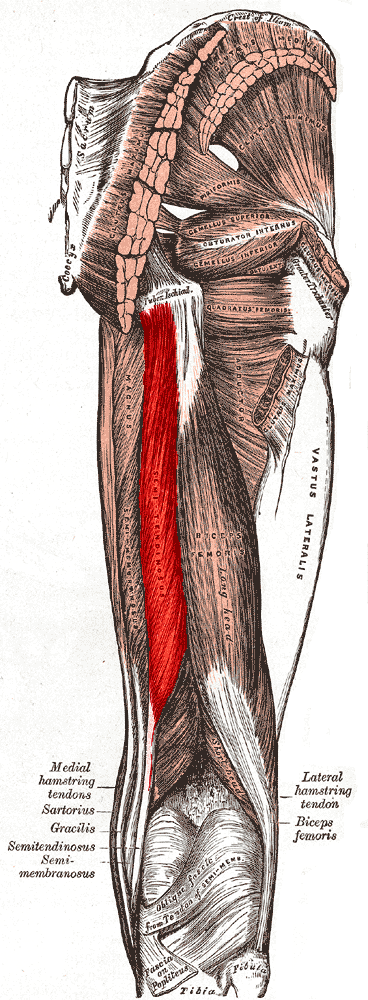Difference between revisions of "HAMSTRINGS-SEMIMEMBRANOSUS"
From NeuroRehab.wiki
(Imported from text file) |
(Imported from text file) |
||
| Line 1: | Line 1: | ||
[[Summary Article|<h5>'''SUMMARY'''</h5>]] | [[Summary Article|<h5>'''SUMMARY'''</h5>]] | ||
<br/><b><i>TIP: 'SM' - 2 'semi' muscles inserted medially</i></b> | <br/><b><i>TIP: 'SM' - 2 'semi' muscles inserted medially</i></b> | ||
<br/><b><i></i></b> | <br/><b><i></i></b> | ||
<br/>1. O: ischeal tuberosity. | |||
<br/>2. I: posterior part of medial condyle of the tibia. | <br/>2. I: posterior part of medial condyle of the tibia. | ||
<br/>3. NS: sciatic n. | <br/>3. NS: sciatic n. | ||
Revision as of 12:45, 27 December 2022
SUMMARY
TIP: 'SM' - 2 'semi' muscles inserted medially
1. O: ischeal tuberosity.
2. I: posterior part of medial condyle of the tibia.
3. NS: sciatic n.
4. A: flexes the knee; extends the hip.

Image: Gray, Henry. Anatomy of the Human Body. Philadelphia: Lea & Febiger, 1918; Bartleby.com, 2000. www.bartleby.com/107/ [Accessed 13 Apr. 2019].
Reference(s)
R.M.H McMinn (1998). Last’s anatomy: regional and applied. Edinburgh: Churchill Livingstone.
Gray, H., Carter, H.V. and Davidson, G. (2017). Gray’s anatomy. London: Arcturus.